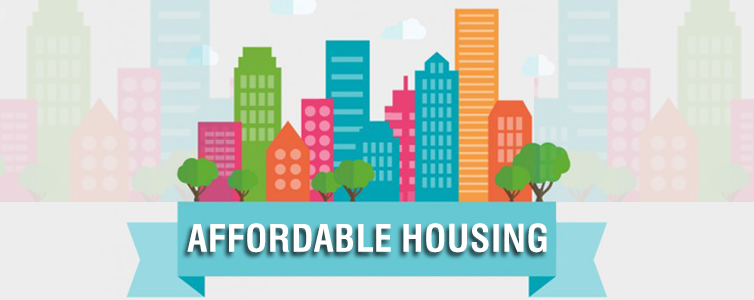Affordable Housing to write a new tale for growth in realty
Share Affordable Housing to write a new tale for growth in realty
The last year has been challenging, but at the same time it introduced new trends in running business and operations for the real estate sector. The government as well understood the need of the hour and resorted to announcing some of the prudent policy changes and packages to boost the overall growth in the sector. The direct impact of these announcements bodes well for the buyers and as per the recent quarterly report of a leading digital real estate advisory firm, Proptiger.com units in the sub-Rs 45-lakh category were the largest contributor to the overall supply, with nearly 46% share, followed by the mid-segment units. Housing units in the Rs. 45 lakh and below category, stand for 48% of the overall sales numbers in top 8 cities during the quarter ended December 31, 2020.
All these figures indicate the scope and expanse of affordable housing in the Indian realty market. Affordable market has been getting due support from government with the initiatives such as ‘Housing for All by 2022.’ The Tier II-III cities have been witnessing the need for organized living structures at reasonable prices as the trend of reverse migration and government’s efforts to develop them as future urban centres continues. Furthermore, the government’s effort to give an extension in the deadline for Credit Linked Interest Subsidy Scheme to March 31, 2021, under PMAY has encouraged the middle income buyers to buy properties with their limited budgets.
Affordable Rental Housing Complex has been a prudent announcement for the labour class, under PMAY-U with a view to provide ease of living to urban migrants. The pandemic was a wake up call for developers community to create well-maintained living units for their workers. Affordable Rental Housing Complexes scheme will help putting the existing vacant housing stock into productive use and make them available for affordable rental. This measure will also encourage investment and promote a degree of entrepreneurship in the rental housing sector by providing the right incentives for private companies and public entities to utilize their vacant land for developing ARHCs.
Virtual Residential Demand Index by Housing.com portrays that the demand from small cities had been increasing steadily but a significant spike was observed only in August 2020. Overshadowing the metro cities, the index jumped to 210 points for 'shadow cities' compared to 150 for the metros post the nation entered into Unlock Phase 4.0. Cities such as Agra, Amritsar,Chandigarh, Ludhiana, showed growth percentage of more than 90%. This clearly indicates the interest of end-users and investors in these small towns which were previously not the centres of bustling economic activities, but now with developing infrastructure, seamless connectivity through expressways, railways and flights will upscale the growth opportunities for real estate in these regions.
The scope for affordable housing is bound to expand in the coming years and not just in urban cities but also in Tier II-III cities where population density is slated to rise due to the employment opportunities that will emerge from the developing infrastructure. Thus, affordable housing is all set to write a new tale for growth in realty.
Request a Call Back

